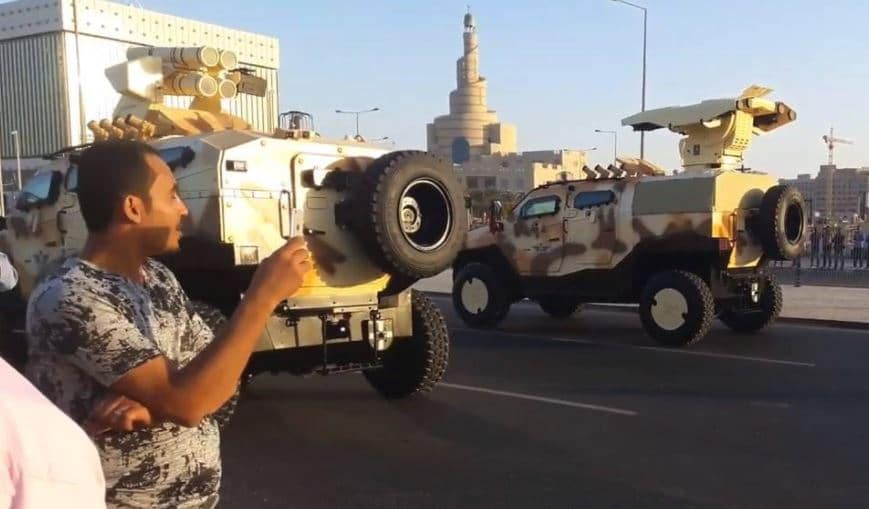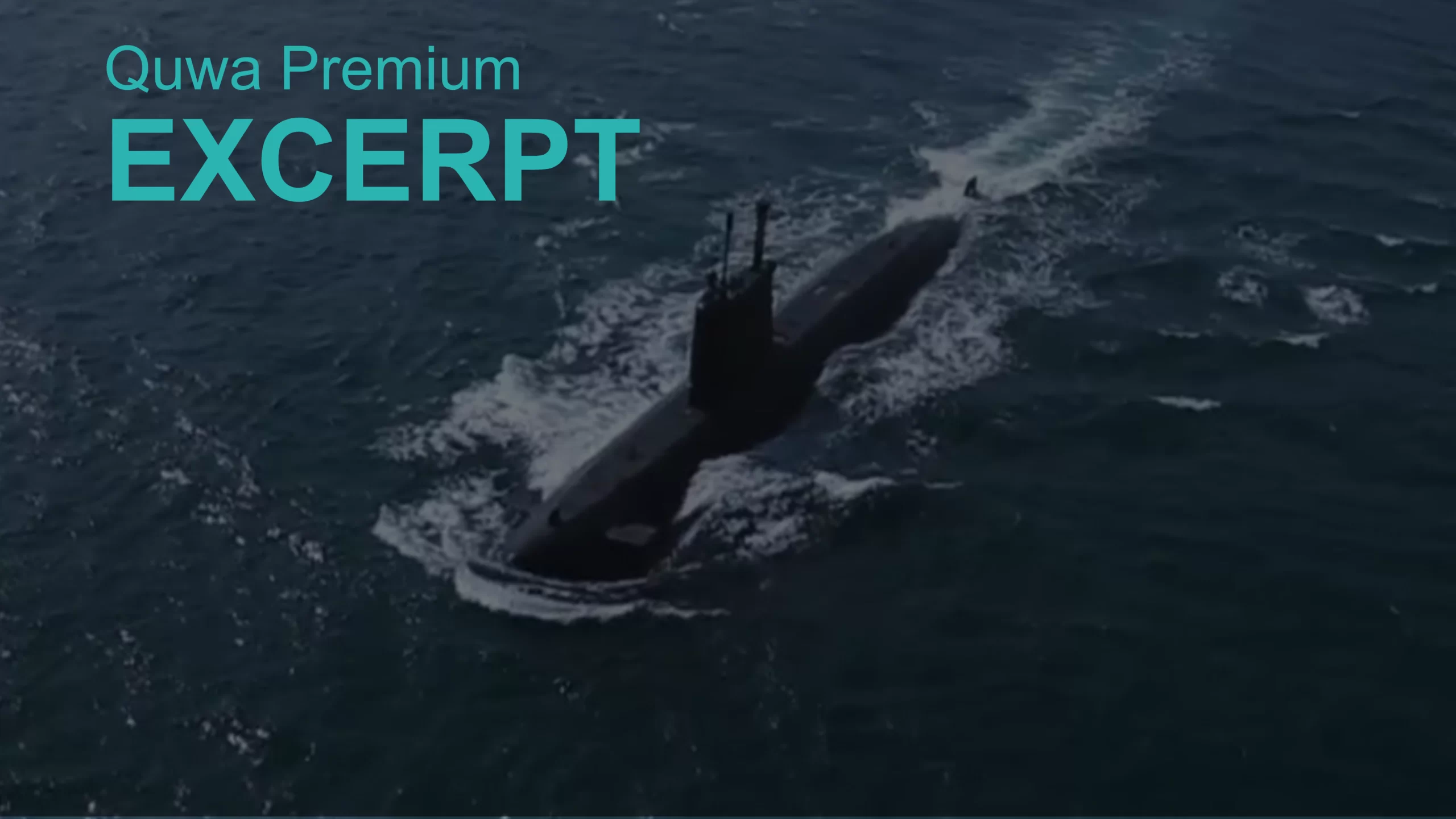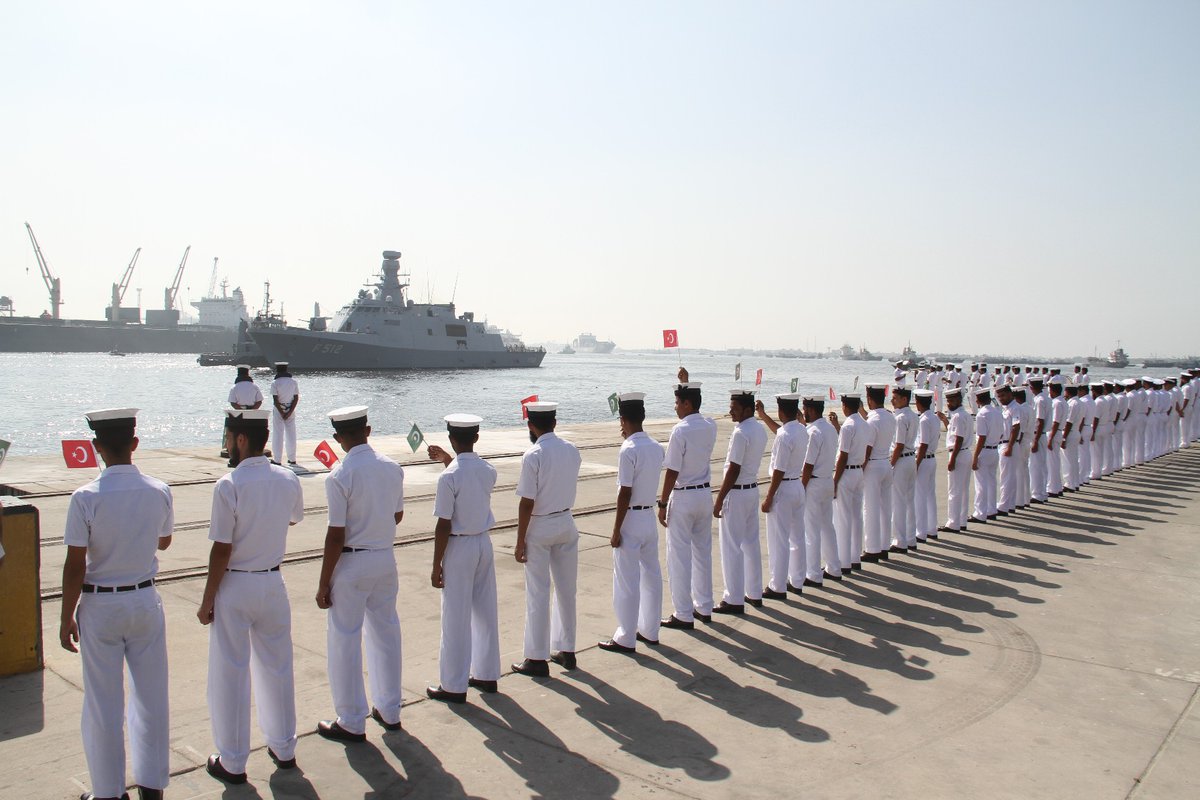2617Views 9Comments

Qatar reveals itself as Nurol Makina NMS 4×4 user
In rehearsals for its National Day military parade, the Qatar Armed Forces have revealed themselves as the launch overseas user of Nurol Makina’s new NMS 4×4 light armoured vehicle.
Nurol Makina revealed the NMS 4×4 at the 2017 International Defence Industry Fair, which took place in May in Istanbul. The NMS 4×4 has a v-shaped monocoque frame built on an indigenous chassis which can sustain a TNT explosion of up to 6 kg (i.e. STANAG 4569 Level 2A/B).
Photos show Qatari NMS 4×4 equipped with Igla pedestal-based short-range surface-to-air missile (SAM) systems and anti-tank guided missiles. The NMS has a gross-weight of 10,000 kg with a top speed of 140 km/h and maximum range of 700 km. It can carry up to nine personnel.
Besides the NMS 4×4, Qatar is also a user of Nurol Makina’s Ejder Yalçın 4×4 armoured combat vehicle. The Ejder Yalçın has a gross-weight of 14,000 kg, payload capacity of 4,000 kg, top speed of 120 km/h and range of 700 km. Its chassis can provide mine-protection of up to STANAG 4569 Level 3B or Level 4A.
Qatar has armed its Ejder Yalçın vehicles with the Aselsan Stabilized Advanced Remote Weapon Platform, which can be configured with a 12.7 mm or 7.62 mm machine gun or 40 mm automatic grenade launcher.
Turkish news outlets (e.g. TGRT Haber) report that Qatar is procuring 100 NMS 4×4 and 400 Ejder Yalçın.
Interestingly, Qatar is also a partner in BMC Otomotiv ve Savunma Sanayi A.Ş. Qatar is also reportedly committed to a purchase of 1,500 BMC Amazon 4×4 light armoured vehicles. By virtue of this partnership, Qatar has also become a competitor in the armoured vehicles market.
Combined with its purchases from Nurol Makina, Qatar will field close to 2,000 (potentially more) 4×4 armoured vehicles for moving its infantry, providing logistics support and specialized roles, such as short-range air defence, anti-infantry and anti-armour combat.



9 Comments
by Joseph
I think that is the least Qatar can do considering Turkey’s helps during the current situation.
If not because Qatar already has way too many different fighter jet platforms Qatar probably would have joined TFX development.
by Steve
I agree. On the face of it Qatar’s aircraft procurement looks like a complete mess. It looks like a bad political decision which will not do any good if there is an actual conflict. I am surprised the Turks are not trying to emulate F-35 with trying to get as many Muslim countries on board as possible with TFX. It will lower unit costs and increase political cohesion with the added benifit of giving the Turks leverage all over the Muslim world. They have asked Pakistan and probably Saudis so let’s see what happens.
by Joseph
Because of Turkey helping Qatar, relationships between Turkey and Saudi Arabia (and UAE) are not on the best of terms at the moment.
There are also reports that UAE is planning a 5th gen fighter with Russia.
Turkey’s military hardware is not exactly cheap (even Saudis complained before that Turkish drones were too expensive), so most likely only the rich gulf countries could afford it. Without Saudi Arabia, UAE and Qatar, and I don’t think Turkey can sell arms to Iran.
Iraq is now basically US territory so I don’t think Iraq could buy anything non-US.
Also there is the fact that neither Turkey nor BAE systems have produced a 5th gen fighter before. It is also a very short development timeline for a clean sheet design (prototype flying in 5 years, enter service around 2025 according to wikipedia, in other words whole project including a new turbofan engine is to be finished in about 7 years). I don’t know how realistic or how much effort they are going to put into it.
The reports on Russia and UAE medium weight 5th gen fighter is going to base on MiG-29 air frame to shorten the development time, so they could finish it in around 8 ~ 9 years. But Turkey and BAE system could finish a clean sheet design in 7 years?
We will have to wait and see what happens.
by Steve
BAE have had major input in F-35. The Turks seem to have turned the corner in many fields and are in a position to field high quality NATO standard products in a relatively short timescale mostly on the back of private companies making stuff with government help. We need to get our act together and soon. There is potentially a lot of knowledge and technology to be acquired without the usual tech transfer BS.
by Joseph
I am not talking about subsystems, I am talking about air frame and system integration alone could take more than 7 years.
Turbofan engine development usually takes much longer, need to go through phases like engine core -> technology demonstrator -> prototype -> testing, etc. Engine prototypes usually need to go through more than 5000 hours of testing, some even up to 10000 hours, which itself could take about 5 ~ 8 years.
Do you know why Chinese jet engines were unreliable? From what I hear the initial version of WS-10 only undergone 300 hours of testing. But of course at that time Chinese did not have adequate testing tools and platforms. Now I think Chinese engines go though the same 5000+ hour testing as western engines.
Anyway what I am saying is that there is no shortcut on jet fighter and turbofan engine development. So I will watch with interests on what is going to happen with TFX.
by sam
actually turkey knew this, that is why they gone with Roles Roys Partnership for engine.
if they select EJ200 technology, which is a tested engine with Typhoon, that would not take time to build a modified version for TFX
.
actually what is time consuming for TFX is not the airframe or engine, radars or even avionics. because Either, TAI, Aselsan, BAE, or Roles Roys have enough technology or knowhow to complete the project in time.
but the most important one which makes me uncomfortable is. (SOFTWARE)
TAI already produce F-35 center fuselage and many parts of avionics and stealth composite materials
while BAE system produce F-35 Wings and Tails and many other sub-systems.
Italian or French radars can be procured easily if Aselsan could not produce in time.
but how they are going to create a software for this type of fighter with all sophistications.
i am not sure, if BAE have that knowledge, because a few years back, UK was complaining about US unwillingness to share source codes for F-35 softwares.
u know that F-35 has millions of lines of codes.
how UK and Turkey can do it. only they know … lol
by Joseph
If Turkey used a modified UK or US engine or even develop on top of an existing engine core, then I wouldn’t say it is an indigenous engine.
And you are right. I am not quite sure TFX can achieve sensor fusion and data sharing that quickly. It was reported that is the part of F-35 software development dragged on and on.
by U
There also were 2 Eurofighters, 2 Rafaels, 2 F15s and Super Mushaks.
by sam
bro everyone is convinced that no country is going to start from scratch and built an engine. because it does not make sense.
yes either a derivative of EJ-200 with general export licence , or a complete technology transfer with intellectual rights owned by turkey.
that would be the most probable, and in fact the only option
even TEI (Turkish Engine Industries) which is planning for the so-called indigenous solution and rival to Rolls Royce, has backing and technology transfer from GE.